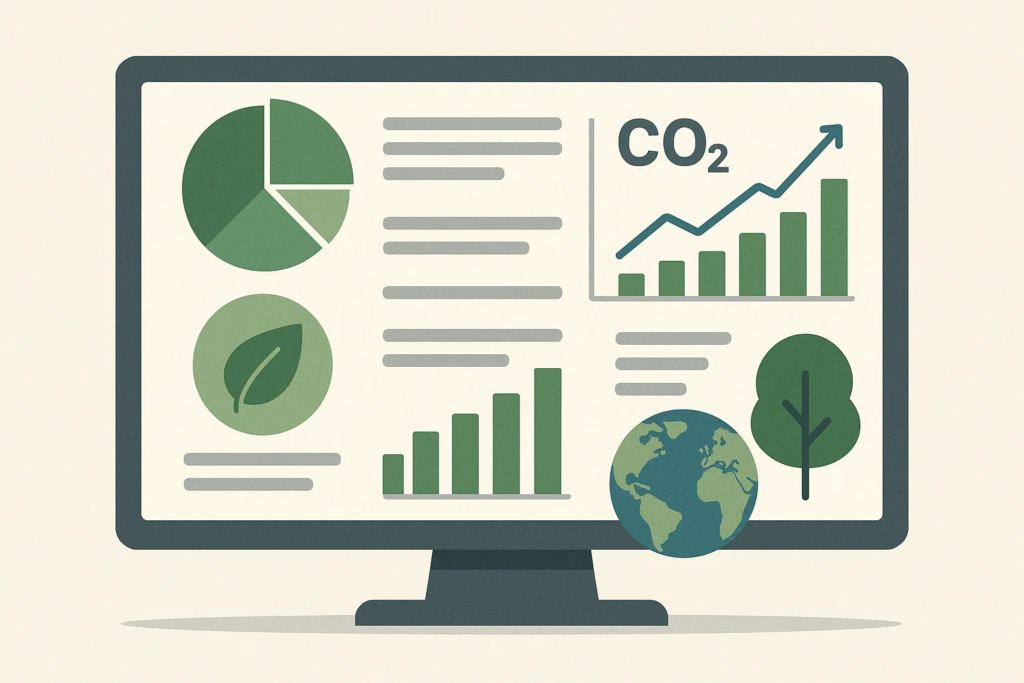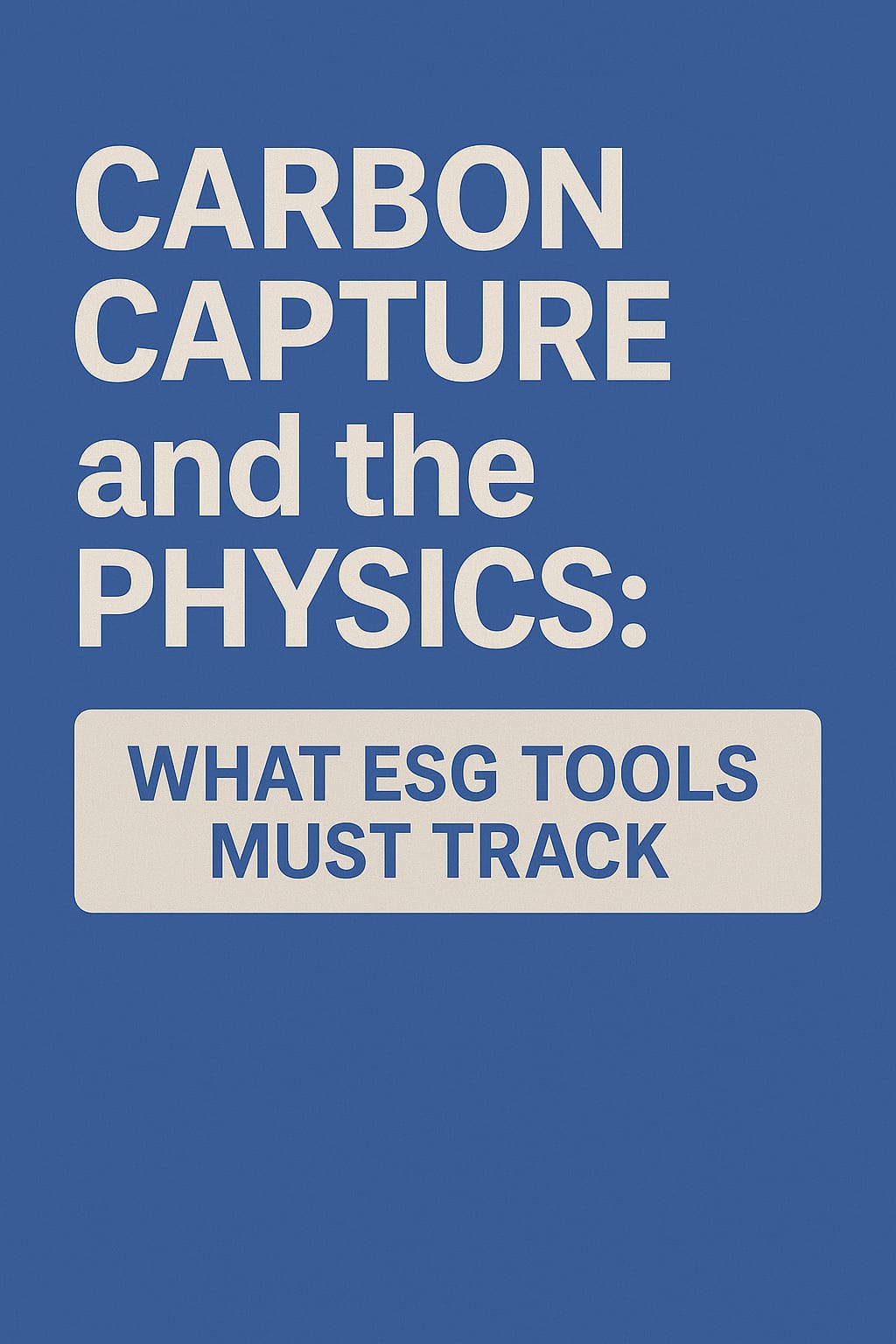Carbon Math: How Scientific Accuracy in Emissions Tracking Transforms Carbon Accounting Software
Tired of guessing your company’s environmental footprint? Accurate carbon accounting software is changing the game. It is helping businesses truly understand and shrink their impact. By bringing scientific precision to emissions tracking, companies can finally meet GHG Protocol standards, measure all their Scope 1, 2, and 3 emissions, and hit those crucial science-based targets.
In this article, let’s see how data-driven CO2 tracking platforms and real-time carbon data are helping organizations to
- improve their climate impact reports,
- and simplify those dreaded sustainability audits.
Whether you’re a sustainability pro, a business leader, or just someone passionate about ESG, grasping the nitty-gritty of emissions tracking will completely transform how you manage your company’s carbon. Let’s dig into the science that’s building a greener future!
What Is Carbon Accounting Software?

Carbon accounting software is a digital tool designed to measure, manage, and report a company’s greenhouse gas (GHG) emissions. Built on emissions tracking systems, these platforms calculate scope 1 2 3 emissions:
Direct emissions (scope 1)
Indirect energy emissions (scope 2)
Value chain emissions (scope 3)
By integrating real-time carbon data, they provide actionable insights for climate impact reporting. For example, software like Persefoni or Watershed helps businesses align with the science-based targets initiative, enabling data-driven sustainability strategies. The scientific approach transforms how organizations achieve net-zero goals.
Why Scientific Accuracy Matters?
Precision in emissions tracking systems ensures reliable data for ESG reporting tools. Inaccurate measurements can lead to misinformed strategies, regulatory penalties, or reputational damage. Scientifically accurate CO2 tracking platforms use standardized methodologies like the GHG Protocol to deliver trustworthy results, boosting credibility in sustainability audit software.
The Science Behind Emissions Tracking

At its heart, carbon accounting software relies on super precise ways to track emissions. It does this by pulling in real-time carbon data, using smart algorithms, and strictly following the GHG protocol to get those numbers just right. For example, to figure out your scope 1, 2, and 3 emissions, the software looks at things like how much fuel you’re burning or electricity you’re using, and then applies “emission factors” from trusted sources like the IPCC or EPA.
Plus, machine learning helps predict future emissions trends, making the data even more accurate, and blockchain keeps everything tamper-proof for your climate reports. All this scientific rigor helps businesses meet their science-based targets, which ultimately pushes them closer to net-zero.
Also Read: Product Managers: Master Carbon Accounting with These Proven Engagement Strategies
How GHG Protocol Compliance Works
The GHG Protocol provides a standardized framework for measuring scope 1 2 3 emissions. Carbon accounting software automates data collection, ensuring compliance with these global standards. For example, scope 3 emissions, which account for 70-90% of a company’s footprint, require complex supply chain analysis, made possible by CO2 tracking platforms.
Role of Real-Time Carbon Data
Real-time carbon data enables dynamic monitoring of emissions, allowing businesses to adjust strategies instantly. Advanced sustainability audit software integrates IoT sensors and APIs to capture live data, improving the accuracy of climate impact reporting and supporting science-based targets initiative goals.
A standout example of carbon accounting software is Salesforce’s Net Zero Cloud, a CO2 tracking platform designed for GHG protocol compliance. It tracks scope 1 2 3 emissions by integrating real-time carbon data from energy usage, supply chains, and business travel. For instance, a global retailer using Net Zero Cloud identified that 80% of its emissions came from scope 3 supply chain activities.
By using the platform’s ESG reporting tools, the retailer reduced emissions by 15% in one year, aligning with the science-based targets initiative.
Key Features of Carbon Accounting Software

Modern carbon accounting software offers features that enhance emissions tracking systems:
- Automated Data Collection: Pulls real-time carbon data from ERP systems, IoT devices, and utility bills.
- Scope 1 2 3 Emissions Tracking: Comprehensive analysis for GHG protocol compliance.
- ESG Reporting Tools: Generates reports for stakeholders, regulators, and the science-based targets initiative.
- Scenario Analysis: Models emission reduction strategies using climate impact reporting data.
- Audit Trails: Ensures transparency with sustainability audit software for compliance checks.
Benefits of Accurate Emissions Tracking
When it comes to managing your company’s carbon footprint, having a precise emissions tracking system is absolutely essential. It’s what truly allows businesses to hit their sustainability targets and stay ahead of the curve. Here are the benefits that show why scientific accuracy in CO2 tracking platforms is critical for modern businesses:
Also Read: Carbon Capture and the Physics: What ESG Tools Must Track
Regulatory Compliance with Confidence
Accurate emissions tracking systems ensure GHG protocol compliance, helping businesses meet stringent regulations like the EU’s Corporate Sustainability Reporting Directive (CSRD) or SEC climate disclosure rules. For example, a manufacturing firm using carbon accounting software like Persefoni avoided €100,000 in fines by accurately reporting scope 1 2 3 emissions in 2024, demonstrating compliance with EU standards.
Cost Savings Through Efficiency
By pinpointing emission sources, sustainability audit software identifies inefficiencies, such as excessive energy use in scope 2 emissions. A retail chain using Microsoft’s Sustainability Manager reduced energy costs by 12% ($500,000 annually) after optimizing warehouse operations based on real-time carbon data. These savings enhance profitability while supporting climate impact reporting.
Enhanced Stakeholder Trust
Transparent ESG reporting tools provide stakeholders like investors, customers, and employees with reliable data, fostering trust. A 2023 survey found that 76% of investors prioritize companies with robust climate impact reporting. Carbon accounting software ensures accurate disclosures, strengthening brand reputation and investor confidence.
Strategic Planning for Net-Zero Goals
Alignment with the science-based targets initiative (SBTi) requires precise emissions data. CO2 tracking platforms enable scenario analysis to model reduction strategies. For instance, a tech company used Watershed’s carbon emissions tracking system to cut scope 3 emissions by 20% over two years, achieving SBTi approval. This strategic clarity drives long-term sustainability.
Risk Mitigation and Resilience
Accurate real-time carbon data minimizes risks of regulatory penalties and market disruptions. Sustainability audit software provides audit trails for compliance checks, reducing exposure to fines. A 2024 case saw a logistics firm avoid a $200,000 penalty by using carbon accounting software to document GHG protocol compliance.
Market Competitiveness
Companies with robust climate impact reporting gain a competitive edge. A 2024 report noted that 65% of consumers prefer brands with verified sustainability practices. ESG reporting tools powered by accurate emissions data help businesses market their commitment to digital scarcity science, attracting eco-conscious customers.
How to Choose the Right Carbon Accounting Software
Selecting the best carbon accounting software involves these steps: Assess Compliance Needs:
- Ensure support for GHG protocol compliance and scope 1 2 3 emissions.
- Check Data Integration: Look for real-time carbon data and API compatibility.
- Evaluate Reporting Tools: Prioritize robust ESG reporting tools for stakeholders.
- Verify Scalability: Choose a CO2 tracking platform that grows with your business.
- Confirm Audit Features: Opt for sustainability audit software with transparent audit trails.
Conclusion
The precision of emissions tracking systems is reshaping carbon accounting software, enabling businesses to achieve GHG protocol compliance and align with the science-based targets initiative. By accurately measuring scope 1 2 3 emissions, leveraging real-time carbon data, and utilizing ESG reporting tools, organizations can transform climate impact reporting into a strategic advantage.
From Salesforce’s Net Zero Cloud to AI-driven CO2 tracking platforms, the science of carbon math empowers companies to reduce emissions, cut costs, and build stakeholder trust.
Have questions about scope 1 2 3 emissions? Leave a comment below and join the sustainability revolution today!
Carbon Accounting Software: Frequently Asked Questions
What is carbon accounting software?
Carbon accounting software is a digital tool that measures, manages, and reports greenhouse gas emissions, ensuring GHG protocol compliance. It tracks scope 1 2 3 emissions using real-time carbon data to support climate impact reporting and align with the science-based targets initiative.
How do emissions tracking systems improve accuracy?
Emissions tracking systems use scientific methods, like IPCC emission factors and real-time carbon data, to calculate scope 1 2 3 emissions precisely.
Why is GHG protocol compliance important?
GHG protocol compliance ensures standardized measurement of emissions, critical for regulatory compliance and credible climate impact reporting. It helps businesses meet global standards and align with the science-based targets initiative.
Can small businesses use CO2 tracking platforms?
Yes, scalable CO2 tracking platforms like Watershed offer affordable solutions for small businesses, integrating real-time carbon data and ESG reporting tools to support sustainability audit software and compliance needs.

